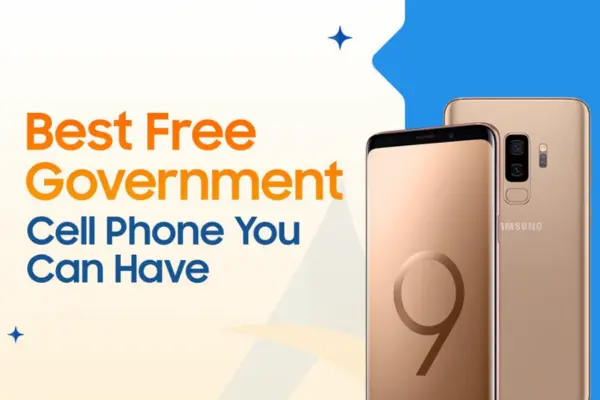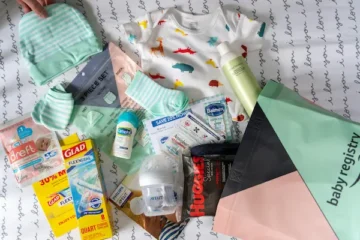Free Government Phone: How to Qualify and Get a Free Device
Anúncios
You may qualify for a free government phone if you receive certain public benefits or meet income limits.
These phones come with free monthly service, including talk, text, and data, helping you stay connected without extra costs.
Eligibility often includes:
- SNAP
- Medicaid
- SSI
- Federal housing assistance
You can apply through approved providers offering government-supported plans. These programs aim to help you access essential phone services for work, family, and emergencies.
The Lifeline program is the main source of free government phone services. It supports eligible low-income consumers by providing discounts or free phones with reliable service. You only qualify for one Lifeline benefit per household.
Here’s what you should know:
| Feature | Details |
|---|---|
| Monthly talk minutes | Minimum 1000 minutes |
| Data allowance | Several GBs of data included |
| Text messages | Unlimited in most plans |
| Device types | Smartphones, tablets, iPhones |
The program is managed federally but accessed through local providers. You must prove eligibility with official documents.
If you qualify, getting your phone and service is often simple and fast.

What Is a Free Government Phone?
A free government phone is a basic smartphone provided to eligible low-income individuals to ensure access to communication services. The phone often comes with a free or discounted monthly plan that covers calls, texts, and some data. This program helps people stay connected for work, emergencies, and daily life.
Overview of the Lifeline Program
The Lifeline program is a federal benefit that lowers the cost of phone and internet services for eligible households. It started in 1985 to support landline phones and now includes cell phones and broadband.
To qualify, you usually need to have an income at or below 135% of the federal poverty line or participate in programs like Medicaid, SNAP, or federal housing assistance.
Lifeline limits one discount per household to prevent misuse. It is managed by the Federal Communications Commission and supported by fees on phone bills nationwide.
Free Service and Benefits Provided
When you qualify for a free government phone, you typically receive a smartphone with unlimited talk and text plus a set amount of data each month at no cost.
Plans often include at least 4-6 GB of 4G or 5G data, which lets you browse the internet, use apps, and send emails. Some providers, like StandUp Wireless and TruConnect, offer additional perks such as free voicemail and caller ID.
The Lifeline benefit program covers part or all of your monthly service costs, making staying connected affordable or free.
Who Provides Free Government Phones
Free government phones are not supplied directly by the government. Instead, private wireless companies participate in the Lifeline program by accepting subsidies.
Providers like StandUp Wireless, TruConnect, and others compete to offer service plans that meet Lifeline guidelines. They provide the phones and maintain the network service you receive.
You apply either through these providers or the Lifeline National Verifier system. Providers offer various phone models, usually functional Android smartphones that support calling, texting, and basic apps.
This setup creates competition that helps improve service options for those on the program.
Eligibility Requirements
To qualify for a free government phone, you must meet specific rules based on either your participation in certain assistance programs or your household income. Some areas also have unique criteria that may affect your eligibility.
Qualifying Through Government Assistance Programs
You qualify if you or someone in your household participates in approved federal programs. These include Medicaid, Supplemental Nutrition Assistance Program (SNAP), Supplemental Security Income (SSI), and Federal Public Housing Assistance.
Proof of participation in these programs helps speed up your application process. Typically, you need to provide a benefit or award letter that shows your name, the program name, and a recent date. This establishes your right to receive Lifeline benefits, which include discounted or free phone service.
Income-Based Eligibility
If you are not enrolled in qualifying programs, you can still qualify if your household income is at or below 135% of the Federal Poverty Guidelines. These guidelines change yearly and depend on your household size and state.
For example, if you live in the 48 contiguous states and your household has two people, the income limit is about $28,553 per year. Your gross income—before taxes—must be below this threshold to qualify under income rules.
Program-Specific Eligibility Criteria
Certain details might affect your eligibility depending on your location or circumstances. For example, if you live on Tribal lands, you may access higher discounts and qualify through additional tribal assistance programs, such as Bureau of Indian Affairs General Assistance.
Also, the program limits benefits to one per household. This is important if you share housing with others but keep separate finances. False information in your application can lead to penalties and loss of benefits, so accuracy is essential.
Application Process and Choosing a Provider
To get your free government phone, you need to follow a clear application process and provide specific documents. Once approved, you can select a provider that fits your coverage needs and preferences for phone models and plans.
How to Apply for a Free Government Phone
You can apply online, by mail, or directly through a phone service provider. The fastest way is using the Lifeline National Verifier website, where you create an account and upload your documents.
If you prefer, you can also apply through providers like StandUp Wireless or TruConnect. These companies have easy online forms and customer support to guide you.
When you apply, you will enter personal details and confirm your eligibility. After submission, you usually get a quick decision, sometimes within minutes.
Required Documentation for Application
Before you apply, gather these key documents:
- Valid ID: Driver’s license, passport, or state ID
- Proof of Income: Recent pay stubs or tax returns
- Proof of Participation: Enrollment letters for programs like Medicaid or SNAP
- Proof of Address: Utility bill or lease agreement
- Social Security Number: Last four digits only
Having these ready speeds up your application and reduces delays or rejections.
Top Providers and Coverage Options
After approval, you can choose from several Lifeline providers. StandUp Wireless offers nationwide 5G coverage and includes free smartphones like iPhones or Samsung models.
TruConnect also provides free phones and plans with unlimited talk, text, and data in many areas. They often allow you to switch plans or upgrade devices after some time.
Check coverage maps on providers’ sites to find the best signal in your area. Picking the right provider helps you stay connected with no extra costs.
Affordable Connectivity Program and Related Benefits
You have options to help reduce your internet and phone costs if you qualify for assistance programs. These include discounts, free devices, and other ways to keep your communication services affordable and reliable.
ACP and Its Status
The Affordable Connectivity Program (ACP) offered monthly discounts on internet service and free government phones to eligible households. It helped people with low income stay connected for work, school, and healthcare. The ACP provided up to $30 off internet bills, and up to $75 for Tribal lands.
However, the program ended accepting new applications on February 7, 2024, because it ran out of funding. If you were already in the program, you can keep receiving benefits until they run out. New participants cannot join, so you need to look for other options.
Bundled Benefits and Internet
The ACP bundled benefits included discounts on high-speed internet and free government phones through providers like Metro by T-Mobile and Assurance Wireless. These bundles made it easier for low-income households to get both internet and phone service at lower costs.
With the program’s closure, these bundled offers are no longer available. Still, some providers continue to offer affordable phone plans and prepaid options. You can often find plans that include unlimited talk, text, and data for a lower price, though not free.
Other Ways to Stay Connected
If ACP is no longer an option, you can consider the Lifeline program, which offers a monthly discount on phone or internet services, up to $9.25. You might qualify if your income is low or if you participate in programs like Medicaid or SNAP.
Prepaid phone plans are another affordable choice. They give you control over spending and don’t require credit checks. These alternatives help you stay connected to your community, work, and education without the ACP’s support.
Companies where you can get free smartphones
You can get free smartphones from several companies that participate in the federal Lifeline and Affordable Connectivity Program (ACP). These companies work with the government to provide phones and services to eligible low-income individuals.
Some popular providers include Life Wireless, Access Wireless, and Gen Mobile. Each offers different phone models and plans, but all provide free or discounted wireless service if you qualify.
Here is a simple list of companies:
- Life Wireless
- Access Wireless
- Gen Mobile
- Assurance Wireless
- Safelink Wireless
These providers offer phones like Androids or iPhones, depending on availability. Some will give you a free phone and unlimited talk, text, and data. Others may offer just a SIM card if you have your own phone.
You can usually apply online for these programs. Once approved, the phone or SIM card is shipped directly to your address. Phones typically arrive within 1 to 2 weeks after approval.
Remember, no matter which company you choose, you will need to renew your eligibility each year to keep your free phone service. Check each provider’s website for the most current offers and terms.
How can I qualify for a free government phone?
You qualify for a free government phone mainly through the Lifeline program. This program helps low-income households afford phone and internet service by offering a monthly discount. To be eligible, you must meet specific income or program participation rules.
You can qualify if you or someone in your household participates in government assistance programs like:
- Supplemental Nutrition Assistance Program (SNAP)
- Medicaid
- Supplemental Security Income (SSI)
- Federal Public Housing Assistance
- Veterans Pension
If you don’t receive any of these benefits, you might still qualify based on your income. Your household income must be at or below 135% of the Federal Poverty Guidelines. The exact amount depends on your household size and state.
| Household Size | Income Limit (48 states + DC) | Alaska | Hawaii |
|---|---|---|---|
| 1 | $21,128 | $26,393 | $24,287 |
| 2 | $28,553 | $35,681 | $32,832 |
| 3 | $35,978 | $44,969 | $41,378 |
You are allowed only one Lifeline benefit per household. If someone else at your address already has it, you must prove you live in a separate household.
You will need to provide proof of eligibility when applying. This can be documents showing your participation in assistance programs or proof of income. Applying usually involves submitting this information through a centralized online system.
What are the requirements to receive a free phone from the government?
To qualify for a free government phone, you must meet certain eligibility criteria. These often include participation in federal assistance programs or falling below specific income limits.
You are eligible if you take part in programs like Medicaid, SNAP, Supplemental Security Income (SSI), Federal Public Housing Assistance, or other similar federal programs. Some state programs also qualify you for a free phone.
Income limits are based on the Federal Poverty Guidelines and depend on your household size. For example:
| Household Size | Maximum Annual Income |
|---|---|
| 1 | $17,226 |
| 2 | $23,274 |
| 3 | $29,322 |
| 4 | $35,370 |
If your income is below the limit for your household size, you could receive a free phone.
You need to apply by providing proof of your program participation or income. Only one phone is allowed per household under these programs.
Some states have extra rules or programs that might qualify you. Check local providers or state websites to see if there are additional options for you.
Which providers offer free government phones in Florida?
If you qualify for the Lifeline program, several providers can give you a free government phone in Florida. These companies offer different phone models, from simple flip phones to smartphones like iPhones or Android devices.
Main providers in Florida include:
- Assurance Wireless
Available nationwide, including Florida. They provide free smartphones and service if you meet eligibility rules. - Access Wireless
Offers free smartphones and unlimited phone service under the Lifeline program. - i-wireless LLC (doing business as Access Wireless)
A provider for Lifeline assistance, offering phones and plans to low-income users.
You will find that phone models vary by provider. Some offer basic feature phones, while others provide more advanced phones with internet access.
Many providers give you free monthly minutes and texts. Some include extra data for internet use.
To apply, you need to prove you qualify for government help programs, like Medicaid or SNAP. Then, you can choose a provider and submit your application.
Below is a simple overview:
| Provider | Phone Options | Service Type | Eligibility Requirement |
|---|---|---|---|
| Assurance Wireless | Flip phones, smartphones | Free calls, texts, some data | Proof of government assistance |
| Access Wireless | Smartphones | Unlimited service | Proof of income or assistance |
| i-wireless LLC | Smartphones, basic phones | Lifeline plans | Federal or state program eligibility |
You can compare plans, phone choices, and eligibility criteria online before applying. This helps you find the best option for your needs.
What documents do I need to apply for a free government phone?
To apply for a free government phone, you must provide certain documents that prove your eligibility. These documents show your income, identity, and participation in government programs.
You need to prove your identity with a government-issued ID. This could be a driver’s license, passport, or state ID. If you don’t have these, a birth certificate may work with other ID.
To show your income, submit papers like tax returns, recent paycheck stubs, or benefit statements from Social Security or unemployment programs. These prove that your household meets the income limits.
If you qualify through a federal benefit program, include proof such as a benefit award letter, approval letter, or a program participation card. These confirm you are part of programs like SNAP, Medicaid, or others.
You will also need to prove your current address. Documents such as a recent utility bill, lease agreement, or an official letter showing your address will work.
In some rare cases, extra documents like power of attorney or legal guardianship papers might be necessary, especially for elderly applicants or those who need a guardian.
Having all these documents ready helps speed up your application and avoids delays.
Can I get a free government smartphone, or is it limited to basic phones?
You can get a free government smartphone, but the type of phone depends on the service provider. Many companies offering Lifeline plans include entry-level smartphones with their free monthly service. These phones often have basic features but may support modern functions like texting, calling, and limited internet use.
Some providers may offer more advanced models such as iPhones or Samsung smartphones. However, these are less common and usually depend on the company’s stock and offers. The government does not directly provide phones; instead, companies cover the cost as part of their business.
Here are key points to consider:
- Phone quality varies: Some phones are simple flip phones or basic smartphones.
- Smartphones may have limited data: Free plans often come with limited data, talk, and text.
- Plans differ by provider: Check which phones and plans your local providers offer.
- Device upgrades: Some services may allow phone upgrades but often after a period or with extra cost.
You don’t have to pay for the phone itself if you qualify for the Lifeline program. But keep in mind the phone’s features and service limits depend on the program’s rules and the carrier’s plans. Always review your provider’s details before applying.
Are there options for free tablets along with government phone programs?
Yes, many government phone programs also offer free tablets or discounted tablets. These devices come through federal programs like Lifeline and the Affordable Connectivity Program (ACP). If you qualify for these programs, you can get both a free phone and a tablet.
Providers like AirTalk Wireless, Cintex Wireless, and QLink Wireless often include tablets in their plans. You may get popular models such as the Apple iPad, Samsung Galaxy Tab, Lenovo Tab, or Amazon Fire HD tablets. These tablets come with free monthly data, talk, and text services.
To qualify, you usually need to participate in government assistance programs such as Medicaid, SNAP, SSI, or hold an EBT card. You must apply with a provider that offers these combined phone and tablet programs.
Here’s a quick look at the tablets you might find:
| Tablet Model | Display Size | Storage Options | Features |
|---|---|---|---|
| Apple iPad 10.2 | 10.2 inch | 64GB / 128GB | Supports Apple Pencil |
| Samsung Galaxy Tab A7 | 10.4 inch | 64GB | Quad speakers, Dolby Atmos |
| Lenovo Tab M10 Plus | 10.3 inch | 32GB / 64GB | Kids Mode, Dolby Atmos speakers |
| Amazon Fire HD 10 | 10.1 inch | 32GB / 64GB | Amazon services integration |
You can often choose your preferred device after your application is approved. Check each provider’s website for specific tablet offers along with free phone options.





